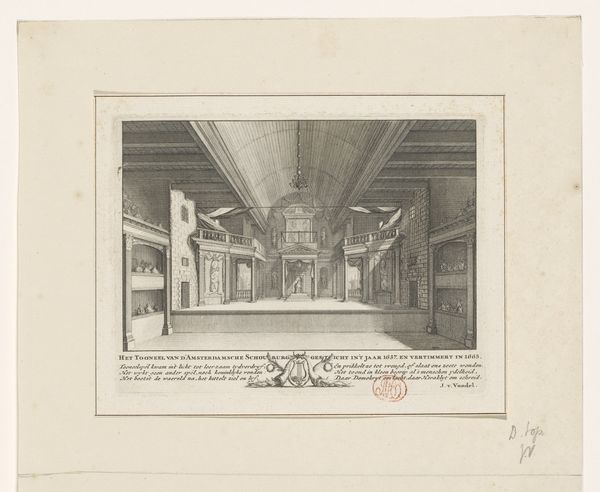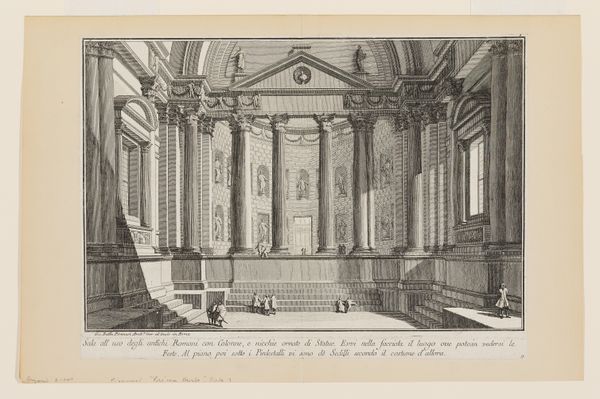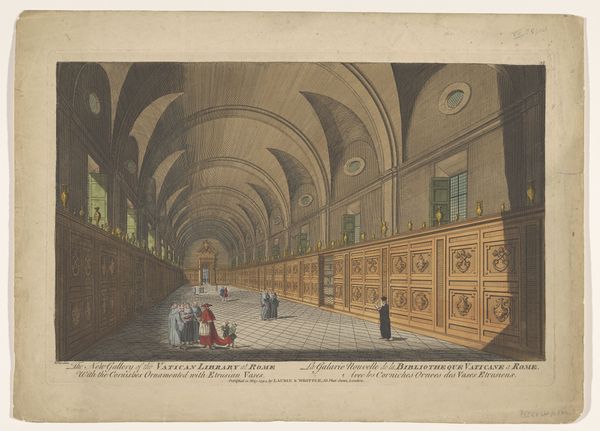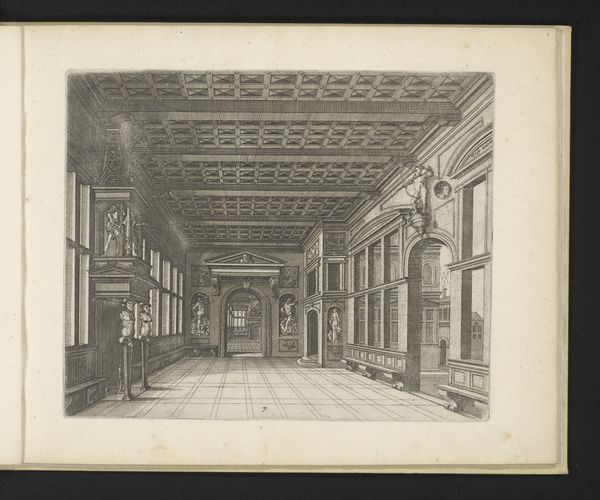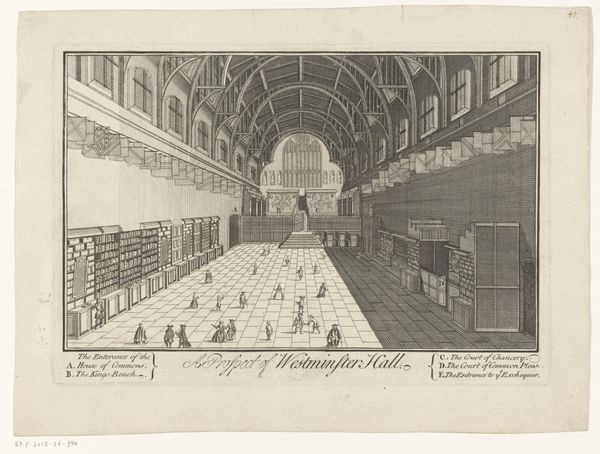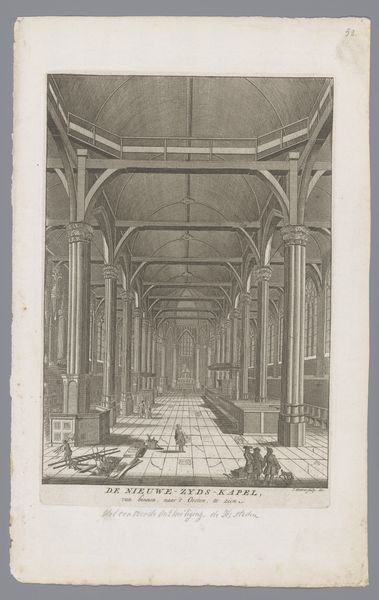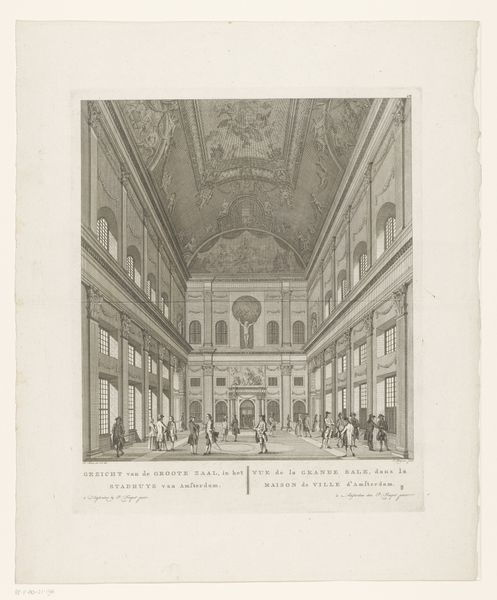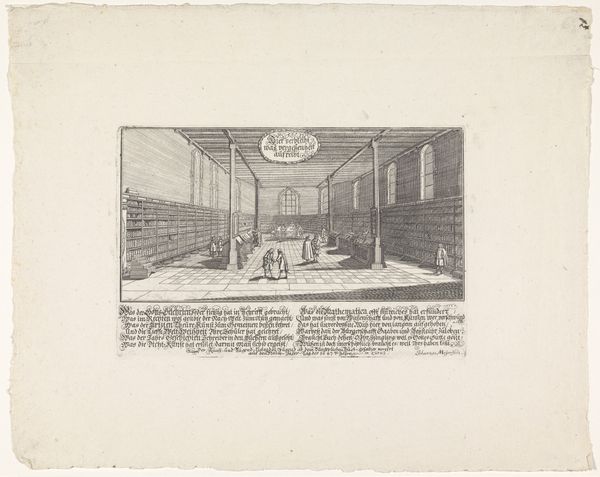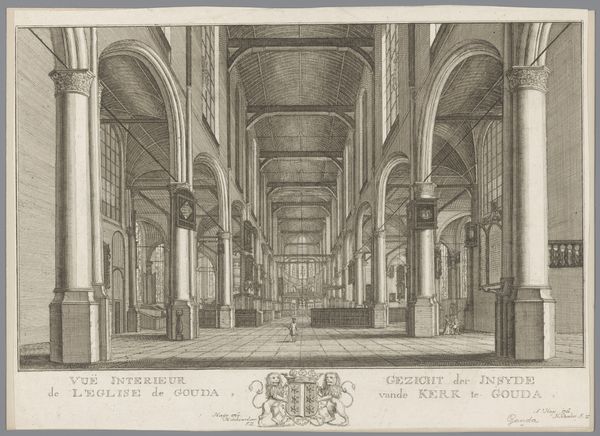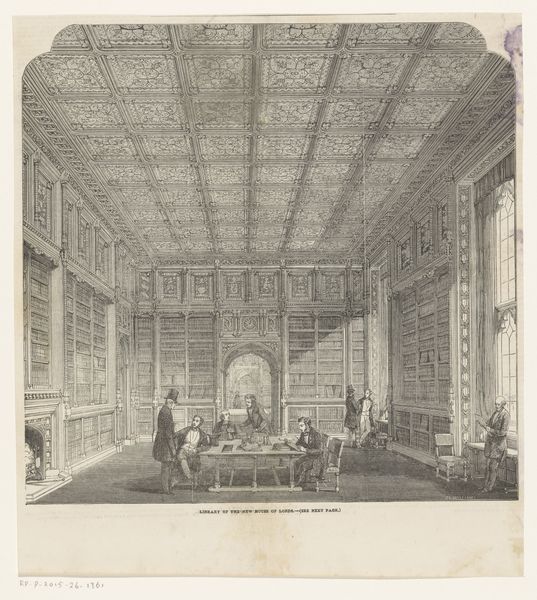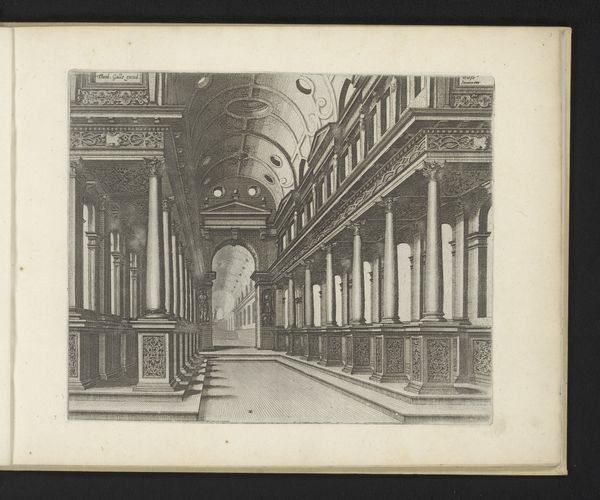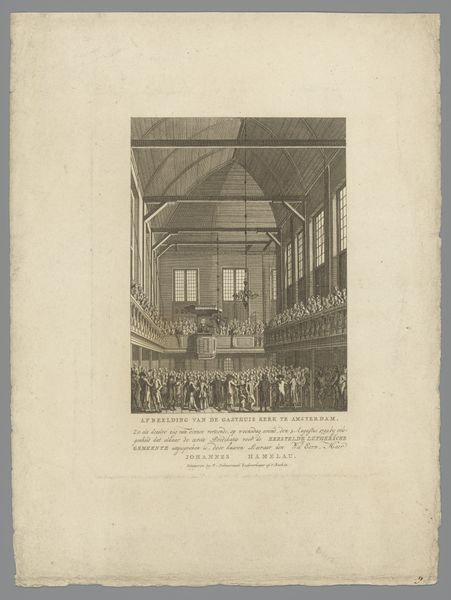
Zaal van de Amsterdamse Schouwburg aan de Keizersgracht te Amsterdam 1738
0:00
0:00
anonymous
Rijksmuseum
print, engraving, architecture
#
baroque
# print
#
cityscape
#
engraving
#
architecture
Dimensions: height 138 mm, width 182 mm
Copyright: Rijks Museum: Open Domain
This print depicts the Amsterdamse Schouwburg as it appeared in 1637, before its destruction by fire in 1663. Made using etching, a printmaking process dependent on the division of labor, it begins with a metal plate, likely copper, carefully coated with wax. The artist then draws into the wax, exposing the metal, which is then submerged in acid, biting away the lines. The application of acid is a highly skilled task, determining the depth of the lines and therefore the darkness of the printed image. We can consider this theater as a factory for emotion, in which the viewers are arranged in a semi-circle according to social status. The architecture is a kind of machine for organizing bodies, reflecting the increasingly rationalized society of the Dutch Golden Age. This detailed print offers insights into the physical spaces of cultural production, reminding us of the labor, materials, and social structures that underpin even the most seemingly ephemeral of art forms.
Comments
No comments
Be the first to comment and join the conversation on the ultimate creative platform.

